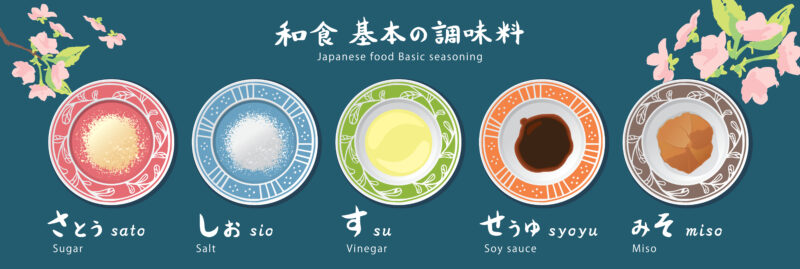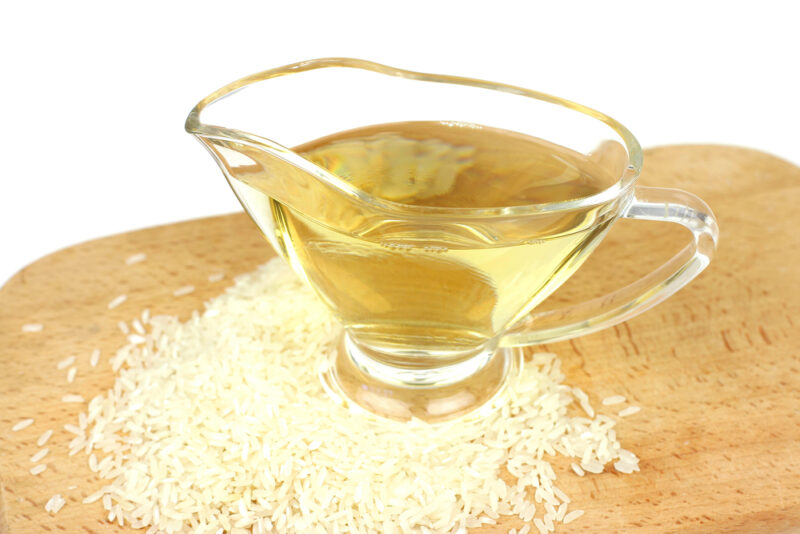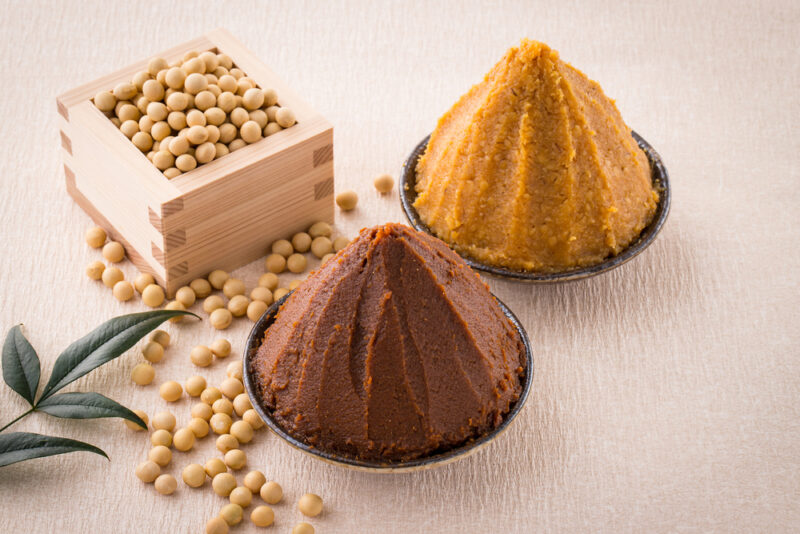What you need to know about Japanese seasonings and condiments!
Sep 05, 2024
What you need to know about Japanese seasonings and condiments!

Japanese food is known as one of the most delicious cuisines in the world, and if you plan to cook some for yourself, you might want to learn about the seasonings and condiments used in Japanese cuisine.
The basic seasonings used in Japanese cuisine are widely known as “Sa Shi Su Se So”, which is an abbreviation for “Satou (砂糖 ,sugar)”, “Shio (塩, salt)”, “Su (酢, vinegar)”, “Seuyu / Shoyu (醤油, soy sauce)”, and “Miso (味噌, miso)”.
In this feature, we introduce the basic condiments “Sa Shi Su Se So”, and also other condiments used in Japanese cuisines in detail!
Index
1. “Sa” for Satou (砂糖, sugar)

“Sa” stands for Satou (砂糖), which means sugar. Sugar needs to be added first as it is denser than salt, making it take longer for sugar to penetrate the other ingredients in cooking.
2. “Shi” for Shio (塩, salt)

“Shi” stands for Shio (塩), which means salt. Salt strengthens the taste of the cooking ingredients, and it is added after sugar to balance the flavour. Adding salt earlier than other condiments is important, as it has strong penetration and high absorption capabilities. Salt is also used to soak moisture from vegetables and remove the smell in fish.
3. “Su” for Su (酢, vinegar)

“Su” stands for Su (酢), which means vinegar. Vinegar prevents food from absorbing too much salt, and it has to be added after the salt as it won’t seep into the vegetable when there is too much moisture.
4. “Se” for Seuyu / Shoyu (醤油, soy sauce)

“Se” stands for Seuyu / Shoyu (醤油), which means soy sauce. Unlike other seasonings and condiments, soy sauce is added at the end of the cooking as it is most sensitive to heat. The heat evaporates the aroma and flavour of soy sauce quickly.
5. “So” for Miso (味噌)

“So” stands for Miso (味噌), which means soybean paste, and miso is added at the end of the cooking as a final touch, enriching the taste of the cuisine.
6. Other seasonings used in Japanese cuisine
In addition to “Sa Shi Su Se So”, there are other seasonings widely used for Japanese cuisines. Some of them are as follows:
- Sake (酒), which means rice wine, is added before sugar to remove the smell and soften the meat and fish.
- Mirin (みりん), is the sweet rice wine, which is added last to add lustre and a mild sweetness to the cuisine.
- Dashi (出汁), is the soup stock used in many Japanese cuisines, which is usually made by heating water containing kombu (kelp) and kezurikatsuo (small shavings of katsuobushi – bonito flakes) to near boiling, then straining the soup. Sometimes dried anchovies and sardines are used to substitute the bonito flakes.
So now you know the seasonings and condiments used in Japanese cuisine, are you ready to try and cook some Japanese food at home now?





